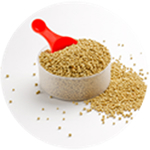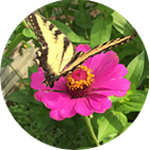This article is about dealing with common indoor plant pests.
You already know that you can improve the quality of your home when you add plants. That’s because they instill a sense of calm and peacefulness. Not unimportantly, according to NASA studies, indoor plants remove up to 87 percent of airborne toxins within a day. It’s no wonder people love to surround themselves with greenery.
But it’s not all clean air and sunshine in the indoor plant world. Although they don’t have as many pests as outdoor plants there are a handful of fairly common indoor plant pests you will want to consider.
Isolate New Plants Before Introducing Them into the House
Marcia Bundi of Bundi Gardens in Great Falls, Montana, says, “When you bring your plants inside, or bring new ones home, isolate them.” Marcia is a veteran horticulturist and greenhouse owner.
Keep new plants isolated for a few days to a week, including any outdoor plants you are moving indoors. It allows you to closely examine the leaves and soil. If you notice something flying or crawling around, eliminate the pest problem before placing them near other plants. It’s much easier to deal with an issue on one plant, rather than all of them.
Assess the Size of the Container
If there are roots poking out the drain holes, it’s time to repot your plant. Since this telltale sign isn’t always obvious, there are other hints that it’s time to give your plant a larger home. If the water sits on top of the soil instead of immediately soaking in, or if the plant seems to dry out excessively, both are good indicators that your plant requires more room. Although a larger space is beneficial, plants don’t require a ‘McMansion’ sized container either. Typically, going up one pot size will get the job done.
The Role of Gravel
Do not commit the cardinal sin of placing gravel in the bottom of a container. While it was a popular habit for a long time, in reality, it’s more harmful than useful. Originally the thought was the gravel keeps the roots from sitting directly in the water, but as long as there are drainage holes, the water runs out the bottom as it should. If there are no drainage holes, the gravel still doesn’t help. It simply creates a dead space that reduces the amount of soil. So leave the gravel in the driveway.
With that said, be sure to have adequate holes in the bottom of whatever container you use. Break out the drill with a masonry bit (preferably 1/4 inch or larger) and add a few drainage holes to whatever container you’re using.
New vs. Old Soil
Besides focusing on ample space, use new soil to reduce the potential for diseases or pests. Plus, fresh soil provides nutrients that have leached out of used potting mix. Learn more about potting soil.




